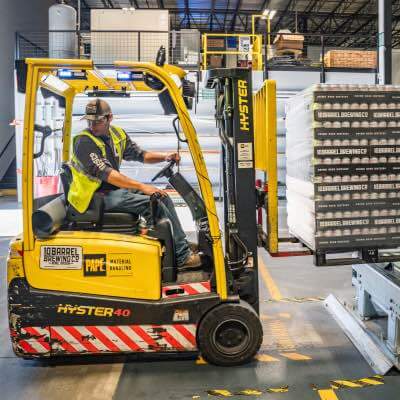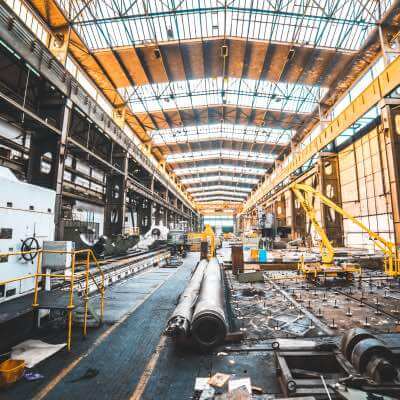Logistics centre and industrial warehouse are completely two different concepts.
Many people believe that the differences between a logistics centre and an industrial warehouse are minimal and use both terms interchangeably and equivalently, that is, as if they were synonyms, which is incorrect.
It’s probably due to the fact that both complexes are dedicated to the storage of products and materials, but the truth is that industrial warehouses perform many more relevant functions other than just storage.
What are the differences between a logistics centre and an industrial warehouse?
The main difference between a logistics centre and an industrial warehouse is how they are used and the functions they perform.

An industrial warehouse is a building in which various industrial activities are carried out, from production to the storage of finished goods. An industrial warehouse can accommodate an entire industry.
A logistics centre is a group of buildings dedicated to the distribution of products and materials manufactured by industrial activities. Therefore, they function as a warehouse and as the production’s starting and finishing point. A logistics centre acts as structure for distribution.
For this reason, an industrial warehouse embraces a larger scope than a logistics centre. In fact, the size of an industrial warehouse and its construction area, covers a space that is substantially larger than that of a logistics centre.
A logistics centre is, by design, incapable of coping with the full workload of an industrial warehouse.
In addition, the functions and goals of industrial warehouses tend to be more general and broad compared to those of a logistics centre, which is aimed at optimizing the distribution of industrial production.
What is an industrial warehouse?

In basic terms, an industrial warehouse is made up of:
- Administrative buildings.
- Production areas.
- Storage areas.
- Loading and unloading merchandise platforms.
- Exhibition and sales areas.
- Parking areas.
- Perimeter zones.
- Waste collection and treatment areas.
In industrial buildings, the entire ecosystem of a company develops, since it acts as a supporting base for board members, workers, production machinery, loading machinery, materials, equipment, transportation vehicles, amongst others things.
Characteristics of an industrial warehouse
- Physical basis of an industry, as it allows production, transformation, assembly, storage, distribution, etc.
- Metal or reinforced concrete prefabricated buildings, or a combination of both.
- Fast and economic construction.
- Structural dimensions depend on the industrial specialty.
What is a logistics centre?

A logistics centre is made up of 3 main areas:
- The receiving and unloading area.
- The storage area.
- The loading and dispatching platform.
The primary aim of logistics centres is to correct deviations and errors during the transition of time between production and consumption, reducing transportation costs. For this reason its location must be strategic.
Characteristics of a logistic centre
- A group of buildings that attend to the distribution of industrial production.
- Facilities that are equipped and set up to store materials.
- It’s a link between the industry and consumers.
- Improves distribution efficiency, reducing costs for the industry.
- Location depending on the region, population, road infrastructure, among other factor.
What do they have in common?
Logistic centres and industrial warehouses aren’t buildings that exclude one another as both have similarities regarding to distribution; storage and transportation of industrial products.

Logistic centres complement and reinforce industrial warehouses, extending the network and distribution channels of an industry.
This way, an important demand is satisfied in areas which are far away from the industrial core, expanding the business influence.
Both facilities can be built using the same construction materials and systems. They are usually metal, concrete, or a combination of both.
A heavy traffic of machinery and people takes place in logistics centres and industrial warehouses. The circulation efficiency is closely linked to the type of flooring of the building.
The paving is a structure which is susceptible to the influence of traffic. Over time it deteriorates, requiring maintenance, repairs and rehabilitations.
To improve a floor’s condition it’s convenient to resort to chemical treatments that increase its hardness and resistance. The BECOSAN® treatment is one of the best methods to obtain more resistant and lasting floors.
